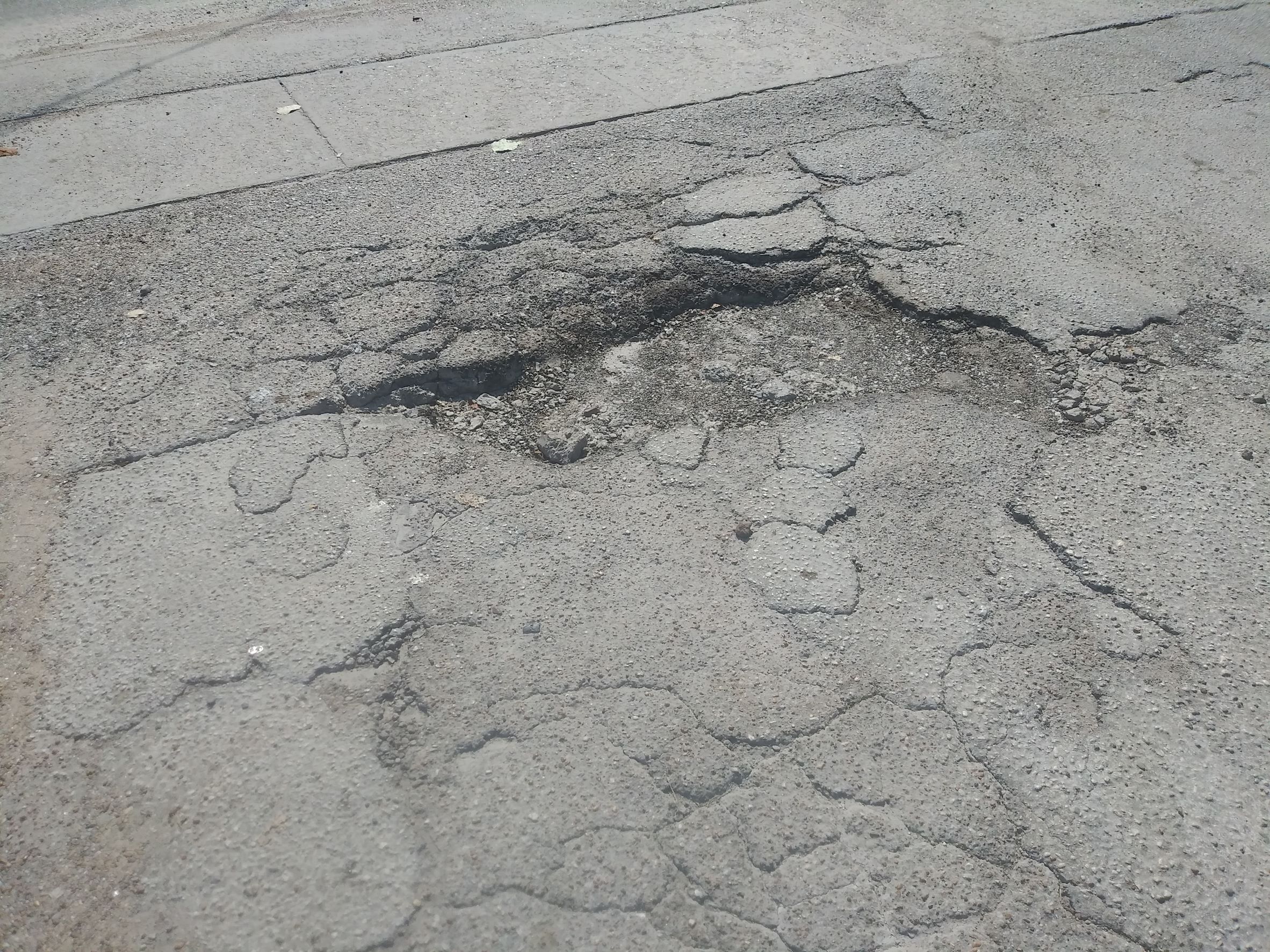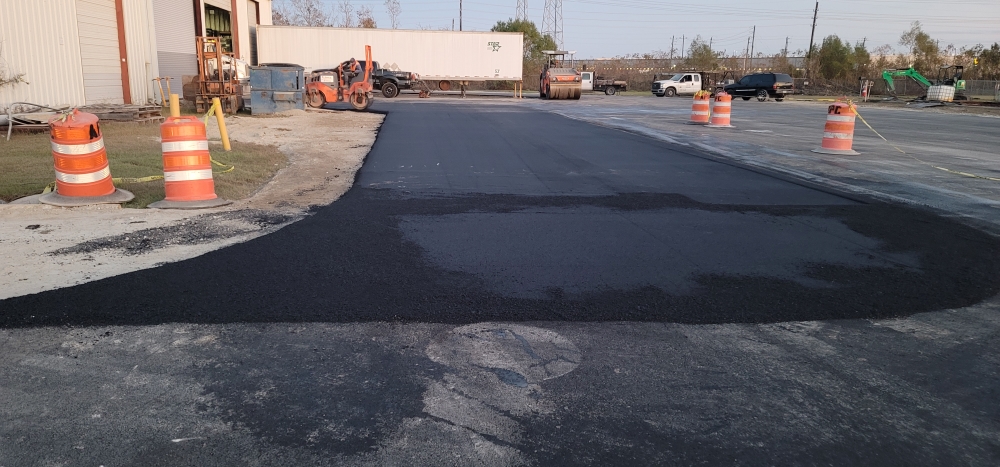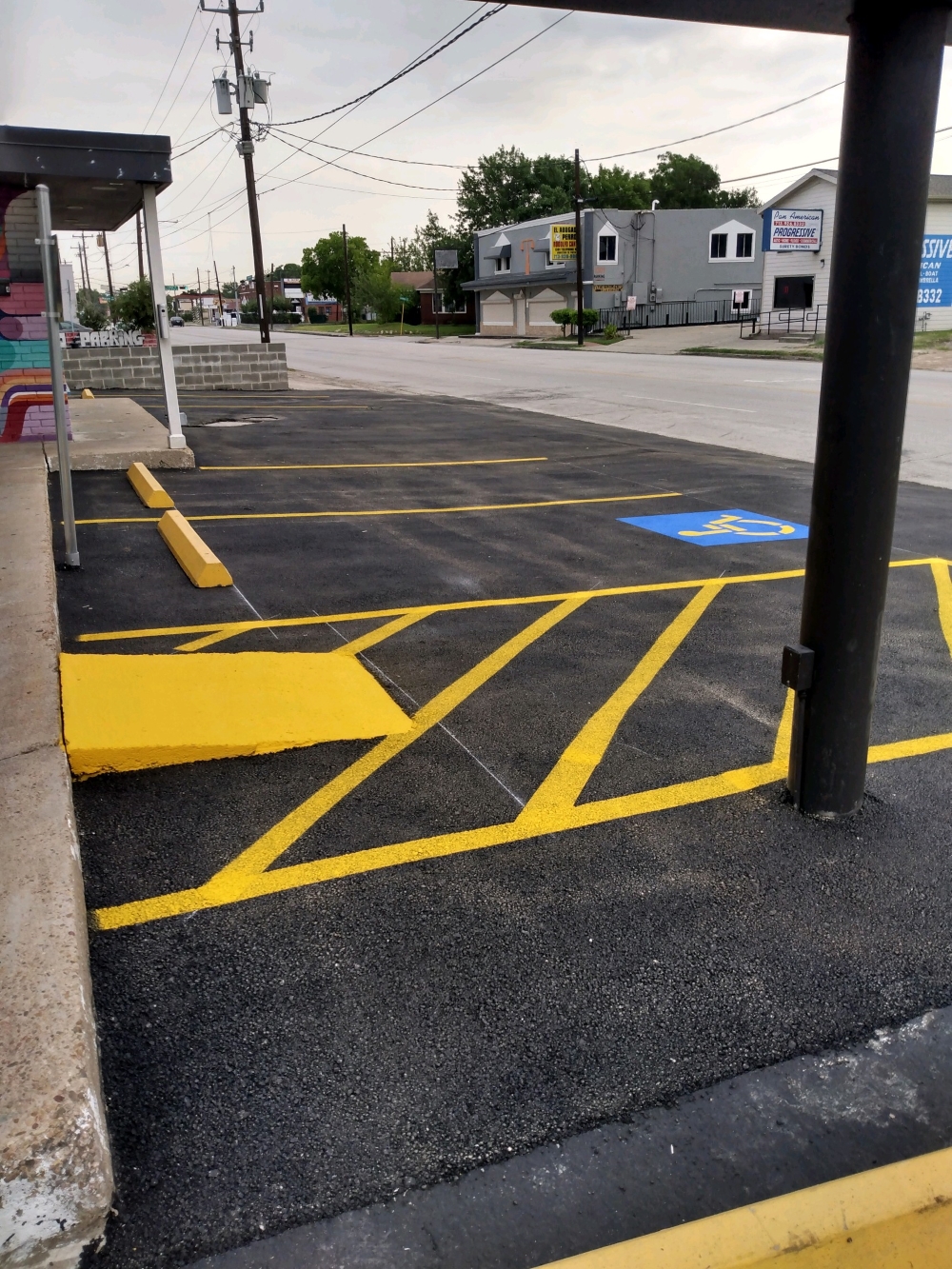Asphalt Pavement Repair Houston, TX
Houston Asphalt Pavement Repair: When it's Needed and How Professionals Get the Job Done
Houston commercial property owners invest a lot of money in their asphalt pavement. And that investment usually pays off, as asphalt can last for decades before it needs to be replaced. Along the way, though, the occasional bit of maintenance or asphalt repair will be required to extend the pavement’s life.
We’ll address those repair methods here, along with some signs that property owners should look for when inspecting their own street and driveway pavement for damage.
How Asphalt Paving Fails: Cracks, Warping and Aggregate Loss
As durable as asphalt is, it’s also flexible. This flexibility comes in handy when shaping the pavement around curves – and it also informs how asphalt fails as it experiences wear and the elements. Specifically, asphalt cracks, warps, or sheds aggregate over time. Here are some notable examples of each:



- Alligator (or fatigue) cracking – Alligator cracking is termed such because it emerges in a scale-like pattern. Alligator cracking typically requires overlaying or replacement, and may be due to a weak base, overloading, or improper pavement thickness.
- Reflective cracks – Reflective cracks “reflect” the damage from deeper levels of pavement. These tend to form over joints or older pavement, and they’ll keep emerging unless the underlying problems are resolved.
- Edge cracks – Edge cracks run parallel to the pavement’s length and emerge near its edges. They almost always form due to insufficient support at these edges.
- Slippage cracks – Slippage cracks are the result of poor asphalt mixing or adhesion between layers. They spread in curved, crescent-like patterns, and are exacerbated by sudden vehicle turning and braking.
- Rutting – Rutting is a form of warping, presenting as one or more grooves, with a noticeable trough and crest. It’s also the result of poor asphalt mixing or consolidation between layers. It may also result from poor compaction methods.
- Shoving – Shoving is another type of warping, characterized by a ripple-like pattern. It usually presents at intersections and in areas where horizontal stresses are extreme. Too much or too soft asphalt are common culprits, as is a weak base.
- Depressions – Depressions are uneven areas in the pavement, appearing like sunken-in spots. Depressions are the result of base failures, and these will quickly turn into potholes, as they cause water to pool on the surface.
- Raveling – Raveling is loss of surface aggregate, typically due to age and exposure to the elements. As raveling worsens, more and more aggregate is shed, which causes raveling to accelerate intensity. Eventually, this can also lead to potholes and water-related damage.
As you can see, asphalt can experience wear and tear in a variety of ways, which is why pavement professionals have developed a variety of methods to resolve them. And whether the pavement requires extensive replacement or some spot crack filling, it’s a good idea to schedule those asphalt repairs promptly.
Why Damaged Asphalt Requires Immediate Repair
If asphalt is so durable, why does it need attention as soon as there’s a potential issue? The answer is to protect the property owner’s investment.
While surface-level cracking or distortion may seem harmless, they leave the pavement vulnerable to additional damage through water or debris intrusion. If water, dirt, or chemicals are allowed to penetrate past the asphalt’s surface layers, they will interfere with the bond that holds the asphalt’s deeper layers together. Before long, this will cause any damage to spread and likely result in more severe (and expensive) issues, like potholes. Once potholes form, further deterioration due to water intrusion is probable.
By responding quickly to cracks, aggregate loss, or warping, property owners preserve their asphalt’s long-term condition – and save themselves money in the long run.
Asphalt Maintenance: Protect the Asphalt with Occasional Sealcoating
Property and business owners can extend their pavement’s life by several years with preventative maintenance. This is true of both concrete and asphalt. Both materials can be sealed for protection against weather and damage – and in asphalt’s case, this sealcoat consists of an asphalt emulsion.
Sealcoating with asphalt is inexpensive, quick, and provides several benefits. They include:
- Better load bearing on the surface. Asphalt sealcoat “glues” the surface aggregate together and allows it to flex better.
- Protection against water, chemicals, and UV radiation. Sealcoat acts like a coat of wax in this regard, blocking out moisture and screening out UV rays.
- Restored appearance and texture. Asphalt sealant restores that dark appearance and texture that epitomizes high quality, new asphalt.
Sealcoating a parking lot, driveway, or access road is a cost-effective preventative maintenance method, and it’s only needed every other year.
Crack Filling: Prevent Water from Penetrating the Pavement with Filler Compounds
Many asphalt cracks can be filled if they aren’t actively spreading or the result of deeper pavement problems. Those must be fixed prior to filling the crack, or the cracks will just re-emerge.
During the crack filling process, the crack is first cleaned out, using air or a heat lance to vaporize any fine aggregate. A rubber-like compound is then heated, melted, and deposited over the crack using a push melter. The compound fills the crack and holds the edges together. As it’s made from a rubber-like mix, the filler flexes with the asphalt during thermal stresses.
Cutting and Patching: Replace Areas of Failed Asphalt with Spot Pavement Replacement
If pavement failures are localized to a few spots, patching those spots is a cost effective solution. During cut and patching, the pavement team will sawcut around the failed area and extract the deteriorated pavement. This can be done with heavy equipment to speed up the process.
Once the base is accessible, the work team will assess the severity of any base failures and restore its stability. When the base is ready for new asphalt, a tack coat is sprayed on the base and vertical surfaces – this promotes adhesion – and new hot mix is then rolled into the hole. It’s then compacted and allowed to cure. Within hours, the patched area can take foot and vehicle traffic.
Overlaying: Replace the Surface Layer of Asphalt to Extend its Life
Asphalt overlays can extend the pavement’s life by 10-20 years and is usually recommended around the halfway point of the asphalt’s lifecycle. During overlaying, the old pavement surface is pulverized down to a depth of 1.5 to 2 inches.
Once removed, a new layer of hot mix is laid over the top of the remaining pavement layers and compacted. In most respects, an overlay performs like a new stretch of asphalt pavement.
Full Depth Replacement: Remove the Old Pavement, Stabilize the Base and Roll Out a New Mix
After 30 or so years, most asphalt has deteriorated to the point where full-depth replacement is necessary. During replacement, the existing pavement is removed down to its full depth, so the base can either be stabilized or replaced with a new base.
In the past, full depth replacement involved disposing of the old asphalt, but modern methods use reclamation technology to repurpose the old asphalt. Specifically, the existing pavement is mixed with new asphalt and combined in a reclaimer that’s deployed onsite. This mix is comparable in performance and appearance to completely new asphalt – only it costs less and greatly reduces waste.
Once the new mix is ready, it’s rolled out over the new base and allowed to cure for a few days before it can take vehicle traffic.
Asphalt is a Reliable Pavement Material, and Even More Reliable with Asphalt Maintenance
When commercial properties invest in asphalt, they’re getting decades’ worth of reliable performance from their pavement. To keep that new asphalt in an excellent state, though, occasional maintenance and asphalt repair services will be required.
When they are, make sure an experienced Houston, Texas pavement contractor is leading the repair. We are experienced in diagnosing asphalt problems and developing the right maintenance method to fix those problems. With responsive asphalt repairs provided by a crew that has experience in other asphalt projects, property owners will optimize their asphalt investment.
